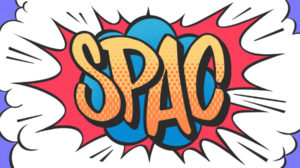Let’s be clear: Slack as a public company today is worth around double what it was last valued at as a private company. During its August 2018 Series H, Slack’s $427 million raise gave it a post-money valuation of just over $7 billion. As of this morning, the productivity-focused technology shop is worth $13.2 billion.
Subscribe to the Crunchbase Daily
Most companies would kill for similar value creation. Slack, however is in a tricky spot. After setting a $26 per-share reference price for its direct listing, and trading as high as $42, its stock has rapidly lost altitude. Indeed, Slack shares have fallen under the $25 per-share mark, reducing its worth to the previously mentioned $13 billion.
Slack, once a private market darling is now enduring a more difficult run as a public company. Its most recent earnings call pushed its shares down by 15 percent before they recovered to a single-digit percentage loss. Later the firm’s equity depreciated anyway, falling from a pre-earnings $31 to this week’s sub-$25 range.
A good question is why; why is Slack’s stock falling? There appear to be a few possible reasons, including Microsoft, a broader SaaS repricing, and the chance that Slack’s public market valuation simply got away from it. We’ll peek at each and relate the situation back to startups as we go.
Three Whys
To summarize our three thoughts, Slack’s public market declines could be built on the fear that Microsoft will blunt its growth profile with its competing Teams product, that software-as-a-service (SaaS) companies are seeing a broader repricing of their revenue (SaaS firms are valued at multiples of revenue instead of a multiplication of profit), or, that Slack was simply overvalued by public market investors when it first began to trade.
Microsoft
Redmond is not interested in allowing Slack to burrow its way into the productivity stack of the next corporate generation. We’ve covered Microsoft’s Teams push here at Crunchbase News for years, noting that the larger company was working hard to grow its internal communication tooling after passing on buying Slack in years past.
There’s no perfect way to gauge investor sentiment in relation to a single idea. But it is hard to see how public investors could be overly worried about Teams and Microsoft today, given recent Slack performance figures.
After reporting 58 percent revenue growth in its most recent quarter, Slack’s CFO Allen Shim reported the following concerning large accounts (the very market category we’d presume that Microsoft’s Teams product would do best amongst):
We remain focused on expansion within existing customers and growing our large enterprise customer base, and ended the quarter with 720 Paid Customers greater than $100,000 in annual recurring revenue, which is up 75% year-over-year.
That’s nice and healthy. Whatever impact Microsoft is having on Slack, and it must have at least some, regardless of what people keep telling me on Twitter, it doesn’t appear to be existential to growth in the short term.
For startups, the above indicates that even when an incumbent technology behemoth enters your market aggressively, there’s still space for you provided that your brand is strong. Slack is a verb; Teams is a competitor.
SaaS Repricing
Software-as-a-service companies have been repriced by the market in recent weeks, but not much. We’ve covered the slight decline in the value of SaaS revenue, noting that from a high of 11x enterprise value/revenue the market has moderated to 10x.
But the multiple data from the Bessemer cloud index just makes plain what we can see in the markets. The same index has been mostly flat over the past few quarters while the companies that make up the index have grown. That puts natural downward pressure on revenue multiples. But all the same, the slow change in the value of SaaS revenue is insufficient to explain Slack’s value changes.
For startups, the takeaway from the above is that public markets still value SaaS companies highly, at least when compared to historical norms. That’s welcome news for quickly-growing private companies that sell code instead of widgets.
Overpriced?
Let’s see if Slack is valued more richly now than before on a revenue basis, and how that may stack up to peers.
As we often do with SaaS companies we’ll use its quarterly revenue tally as the foundation of our ARR calculations. This blends some non-recurring revenue into the figure, but it’s the best that we can do in the case of Slack. What follows are the company’s revenue results for the past four quarters, and its implied ARR:
- Slack Q3 2018 revenue: $105.6 million ($422.4 million ARR)
- Slack Q4 2018 revenue: $122.0 million ($488 million ARR)
- Slack Q1 2019 revenue: $134.8 million ($539.2 million ARR)
- Slack Q2 2019 revenue: $145.0 million ($600 million ARR)
As we can see, Slack has rapidly grown its GAAP revenue, and its implied ARR.
Recall that Slack was worth about $7.1 billion in Q3 2018, and is worth about $13.2 billion today. Using the firm’s Q3 2018 and Q2 2019 ARR numbers, which valuation (loosely) provides the more attractive (lower) multiple?
- Slack Q3 2018 implied ARR multiple: 16.9x
- Slack Q2 2019 implied ARR multiple: 22x
As you can see, Slack’s ARR multiple today is higher than it was. And both its Q3 2018 and Q2 2019 ARR multiples are far above what the Bessemer index sports. (Note: we can’t directly compare the results as we are doing ARR calculations using market cap on one side, and enterprise value/revenue on the other. But the gap is large enough to show Slack as an outlier.)
Now recall that Slack was worth far more a few months ago. That means that its ARR multiple was even higher before. Slack’s declines, therefore, feel much more like the firm inching closer to market norms than it being repudiated by public investors. You simply cannot say that Slack is being dissed by public investors when it is still richly valued compared to its comps.
The lessons for startups in the above is that top-tier SaaS companies can command strong revenue multiples, but that they are not unlimited. No matter who you are.
Wrapping Up
Yesterday, Jeff Richards, a managing partner at GGV Capital shared a chart with Crunchbase News (here) that detailed the premium that faster-growing SaaS companies enjoy over their more slowly-growing peers. In this context, we can add a final wrinkle to Slack’s revenue multiple declines.
It’s perfectly reasonable to say that Slack’s falling net retention rate (from 138 percent in the quarter ending April 2019 to 136 percent in the quarter ending July 2019) implies a slower future growth rate. And that is causing investors to reprice Slack downward, akin to what Richards’ chart would lead us to understand.
But Slack is still a richly-valued SaaS company putting up quick growth from a position of wealth; the company has more cash than the ferrous financial institution. So while Slack’s falling share price makes for good headlines, upon closer look the situation appears to be more return-to-senses than dramatic diss.
Illustration: Li-Anne Dias.

Stay up to date with recent funding rounds, acquisitions, and more with the Crunchbase Daily.









![Illustration of pandemic pet pampering. [Dom Guzman]](https://news.crunchbase.com/wp-content/uploads/2021/03/Pets-2-300x168.jpg)

67.1K Followers